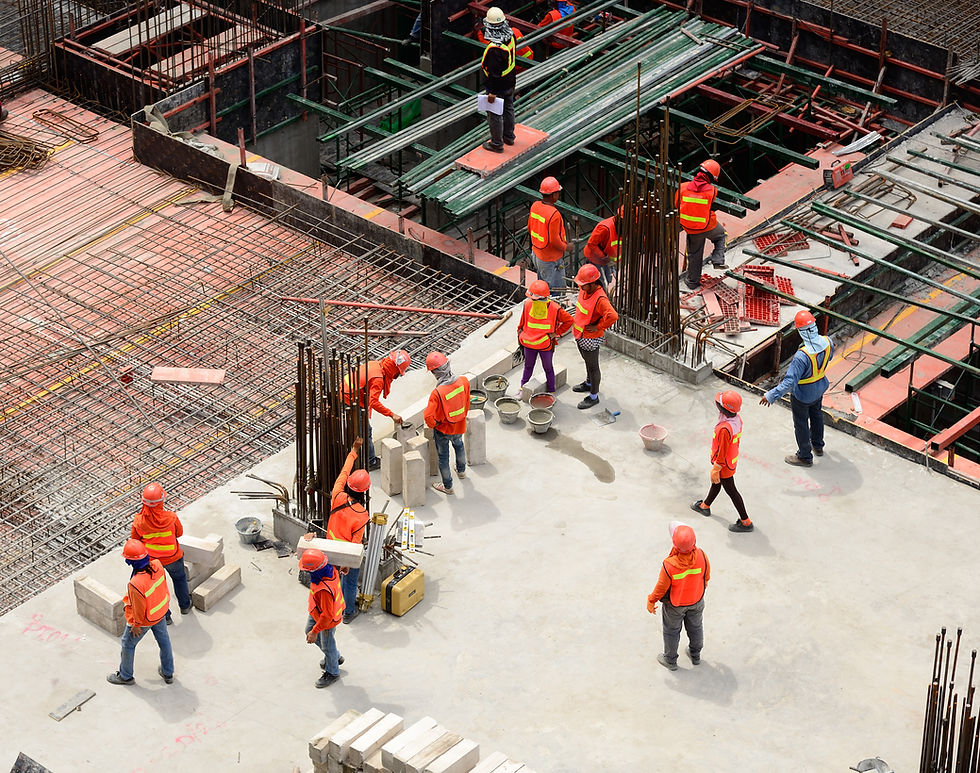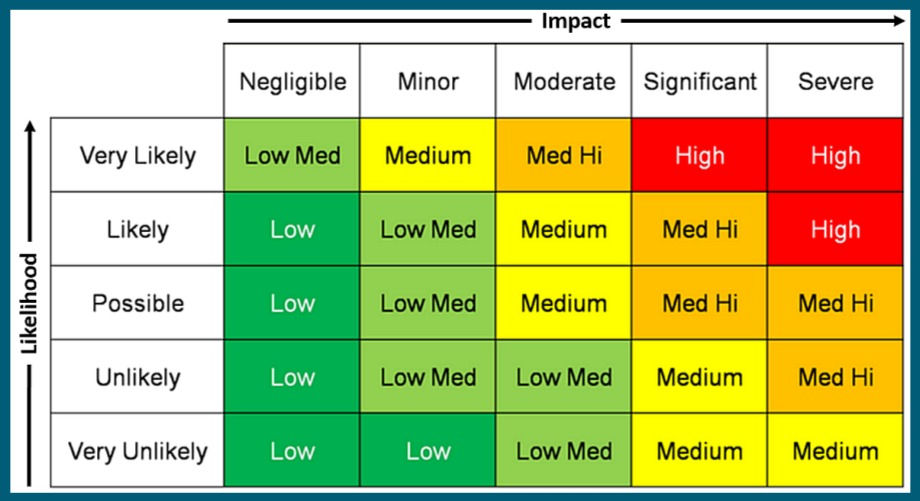Risk Assessment - Overview and Benefits
- Chris Docherty

- May 13, 2020
- 5 min read
Updated: Jun 1, 2020
This video is the first in a 3-part series, where we discuss an introduction to risk assessments. In this introduction video, Chris provides an explanation of risk assessment and the benefits of doing this.
Why do we do risk assessment?
It's effectively to protect our business, our employees, and other stakeholders from potential harm.
What is a risk assessment?
Risk assessment is a careful examination of what could cause harm. It's a capability to weigh up whether you've taken enough precautions or should do more.
The aim of a risk assessment is to check that you have the relevant practices in place to ensure that no one gets hurt or there's no excessive harm to assets or the environment.
Risk Matrix
A risk assessment can come in various ways, but people often utilise a risk matrix to provide guidance in undertaking the risk assessment.
There are multiple ways to use a risk matrix, from using numbers, letters, and the terms used.
A risk matrix should guide you (but not provide the answers) down a path to understand:
What is an acceptable level of hazard and risk
What is a level of hazard and risk that requires additional control
What is a level of hazard and risk that stops a job taking place (whether you add additional controls in place, or whether it's that activity cannot continue).

Risk Matrix Terminology
Consequence of the hazard can also be referred to as the severity. This means thinking about how harmful it can be - whether that be to an individual, the environment, an asset, or a multitude of them.
Likelihood of the hazard can also be referred to as the potential of something happening. Additional controls that we'll talk about later, should ultimately try to reduce this to a level that's acceptable.
Let's go back to some basics...
What is a hazard?
A hazard is something that effectively has the potential to cause harm. Regardless of what that harm is, regardless of the activity or work practice we're referring to, the hazard is effectively something that we have identified that could have the potential to cause harm.

In the workplace, as you can imagine, there are a multitude of hazards, these could come from:
Working in an office
Working on a building site
Working in a laboratory
Working in an engineering workshop
The level of impact of those hazards is going to be different depending on the activity you do and depending on the environment and the controls.
Many work activities have a multitude of hazards and contributing factors to those hazards. But effectively, understanding the hazard is the first step towards doing a risk assessment.
What is a risk?
A risk is the likelihood of harm resulting from the hazard. When we look at risk, we see risk as equal to the severity of the harm and the likelihood or probability of it occurring, sometimes referred to as:
Consequence and likelihood
Severity and probability
It's effectively, how bad it is and is it likely to happen?
There are various ways in which this can be done, but using the matrix below is a fairly common methodology, but should only be used as guidance and provide some support .

If we look along the top axis, the impact is referring to Negligible, Minor, Moderate, Significant and Severe.
And then on the other axis, we're looking at the likelihood. Very unlikely, unlikely, possible, likely, and very likely.
It's important to remember that an organisation should have a process, procedure or a work instruction that provides guidance, as well as some training around how, in their workplace risk assessments are done.
If anyone needs some assistance on this, we've got lots of free resources available on our website, including processes and procedures.
Here's another example, presented in a slightly different way with a little bit more terminology and information.

On the left-hand axis, we're looking at the severity and the consequences in different fields to people, the environment, assets, or reputation, and possibly other social factors.
And then in terms of the probability, they've tried to put some terminology and guidance around that. They are using letters here from A through to E.
A = rare occurrence, and they've tried to put some terminology around that 'Never heard of in the global industry', then
B = an unlikely occurrence, 'Heard of in the global industry, but possibly not locally'.
C = a credible occurrence means 'Incident may have occurred before'.
D = 'Probable occurrence is 'Happens several times a year'.
E = Likely occurrence 'Several times a year within this location.'
What we want to do is use this methodology then to do a risk assessment to ultimately bring down the level of risk by putting additional controls in place. But it is stressed again that this should provide guidance and the interaction of those involved is more important in the risk assessment process.
Risk Assessment Controls
When we talk about controls, we don't simply just mean jumping to PPE.
It's important to recognise the hierarchy of controls, where PPE actually sits at the very bottom of the list.

Ultimately, when we do an assessment with risk assessment methodology, we want to first of all ask the questions,
Can we eliminate doing this task or using this chemical?
Can we substitute it?
Can we do something different?
Can we use something different, something less harmful?
Can we isolate it? (can we remove the need to work, for example, on live electricity or working within a live environment)
Are there additional engineering controls that could be purchased or could be designed to make this activity less harmful?
Or is there additional training or administrative type techniques, which we could do that are unknown that may help make this less harmful.
The last one is, if we are going to be carrying on with this activity, what Personal Protective Equipment (PPE) do we need, that will try to minimize the impact if this happens.

Risk Assessment Legislation
There is a duty to ensure the health, safety, and welfare of our workers, and that's a requirement under law in the Health and Safety at Work Act.
It's important to recognise that actually undertaking a risk assessment is a legal duty, both on employer and employee. Where there is more than five people employed at the workplace, there has to be a written record that that has taken place.
There's also evidence to show that there should be a review of these risk assessments. If this is a reoccurring activity that happens regularly, you need to work with others in the business, particularly the people who are undertaking the risk assessment.
Suitable and Sufficient Risk Assessments
Think about whether is it suitable and sufficient. This means identifying all of the hazards, and specific regulations around it. You must also think about the approach you are doing to take and whether these are routine or non emergency activities.
You must also think about who could be at risk. This could mean:
Is it simply me doing this task?
Is it my team?
Is it the wider workforce?
Is it the potential of pedestrians or others nearby and even assets on the environment?
And what about the existing control measures we have in place,
Have we taken them into account?
Are they going to be suitable?
Process of Risk Assessment:
Ultimately, we want to get through the process of
Identifying what the risk is
Determining what the severity is
Evaluate the likelihood of it occurring
Determine what actions we are taking to control and
Continually monitor and review it
As mentioned at the start of this blog, this is part 1 in a series. If you would like to find out more about the 5 steps of risk assessment or see examples of risk assessment using working from heights and workshop activities, then click on the images below.


Comments